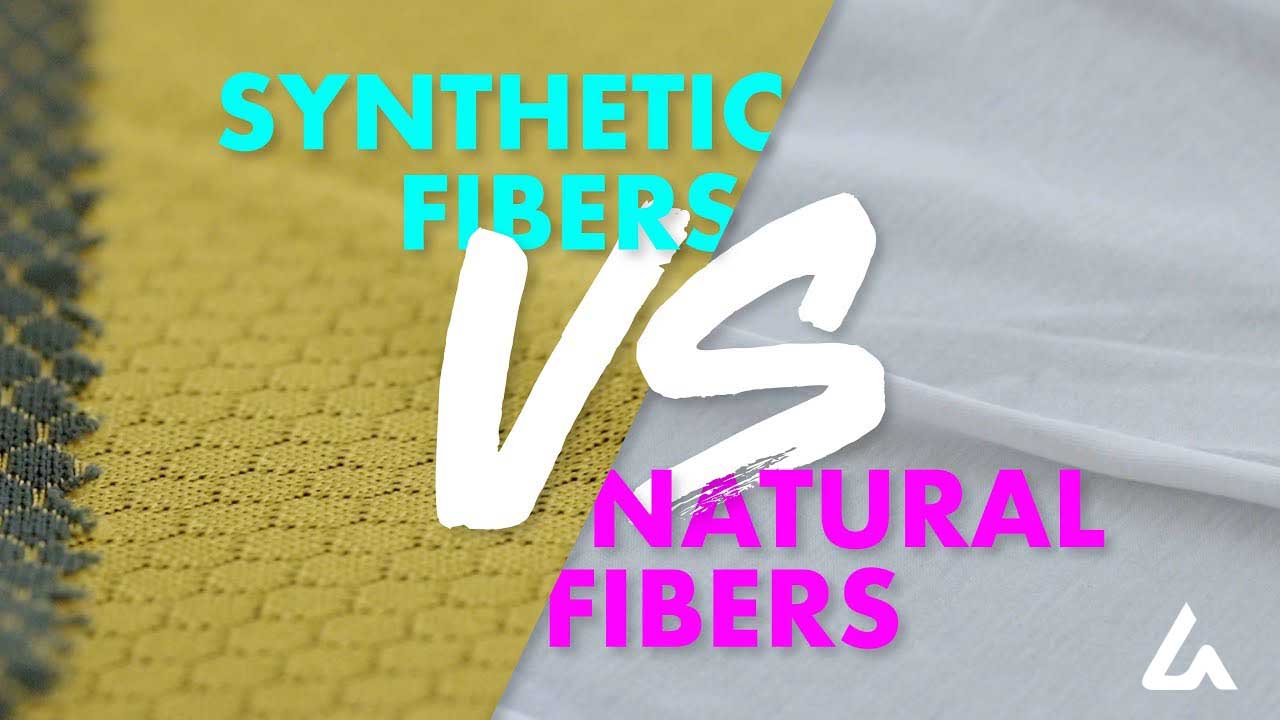
In this post, we will describe the difference between Natural Fiber and Manmade Fiber. Let’s learn step by step about Natural vs Synthetic Fibers
What Are Natural Fibers?
Natural fibers are fibers that are made out of natural materials that come from plants, animals, or minerals. The raw, natural materials are spun into threads and yarns that are then woven or knit into natural fabrics.
There are two general categories of natural fibers: animal-based or plant-based. Animal-based natural fibers include silk and wool, while plant-based natural fibers include cotton, linen, and jute.
Advantages of Using Natural Fibers
Natural fibers are popular for many different reasons, as the fabric is generally more environmentally friendly and durable.
- Absorbent. Natural fibers have an incredibly high absorbency, as the fibers, both plant and animal, have a strong affinity for water. This makes natural fibers a great option for bed sheets and towels, as absorbency is an important factor for these items because they’re used to dry surfaces and receive regular use.
- Eco-friendly. Natural fibers usually have a smaller environmental impact than synthetic fibers because natural fibers do not use as many chemicals during the production process. Some natural fibers are less eco-friendly than others because some plants require more water.
- Durable. Due to the structure of cellulose, which makes up natural materials, most plant-based fibers are very strong. Animal-based fibers, like silk and wool, are also strong.
5 Examples of Natural Fibers
- Silk: Silk is a natural fiber produced by insects as a material for their nests and cocoons. The most common type of silk is made by silkworms. Silk is made primarily of a protein called fibroin and is known for its shine and softness as a material.
- Wool: Wool is a textile from the hair of sheep, goats, alpacas, llamas, and other animals. Different wool fabrics include cashmere, angora, mohair, and more. Wool is a very warm, absorbent, and durable fiber. It is water-resistant, thanks to the lanolin oils from the animals, and it is generally used to make outerwear and cold-weather clothes like sweaters and coats.
- Cotton: Cotton fabric is made from plant fibers from the cotton plant. Cotton is primarily composed of cellulose, an insoluble organic compound crucial to plant structure, and is a soft and fluffy material. Cotton fabric is soft and durable and is often used to make t-shirts and undergarments. Some examples of different types of cotton fabric are organic cotton, denim, and canvas.
- Linen: Linen fabric is a strong, lightweight fabric made from the flax plant. Linen is naturally hypoallergenic and is very breathable, making it a great textile for warm weather clothes.
- Jute: Jute is a coarse natural plant fiber from the jute plant that is used to weave fabrics like burlap cloth. Jute is a popular textile to make rugs and burlap sacks.
Natural vs Synthetic Fibers:
What Are Synthetic Fibers?
Synthetic fibers are made of synthetic materials, usually formed through chemical processes. The fibers are generally extracted during the chemical process using a spinneret, which is a device that takes polymers to form fibers. The textile industry began creating synthetic fibers as cheaper and more easily mass-produced alternatives to natural fibers.
Advantages of Using Synthetic Fibers
Since synthetic fabrics are man-made, artificial fibers, they have many benefits for daily use including their affordability along with their stain and water resistance.
- Cheaper. Most natural fibers can be incredibly expensive, especially in their pure form, and synthetic fibers provide cheaper alternatives to natural products. Many synthetic fabrics are imitation versions of natural fabrics, like wool and silk.
- Stain resistant. Synthetic fabrics tend to be more stain-resistant, and some are even designed to resist staining, therefor synthetic clothing can be great for daily, regular wear.
- Waterproof and water resistant. While some natural fibers resist water, synthetic fibers can be designed to be almost completely waterproof so they are great for outdoor and rain gear.
5 Examples of Synthetic Fibers
- Polyester. Polyester is a synthetic fiber created from coal and petroleum. Polyester is characterized by its durable nature; however, the material is not breathable and doesn’t absorb liquids well so is not recommended for the summer months.
- Rayon. Rayon is a semi-synthetic fiber made from reconstituted wood pulp. Even though rayon is made from plant fibers, it is considered semi-synthetic because of the chemicals, like sodium hydroxide and carbon disulfide, used in the production process. Rayon can be an imitation form of silk, wool, and other fabrics, and examples of rayon include modal, viscose, and lyocell.
- Spandex. Also known as Lycra or elastane, Spandex is a synthetic fiber characterized by its extreme elasticity. Spandex is blended with several types of fibers to add stretch and is used for everything from jeans to athleisure to hosiery. Fun fact: Spandex is an anagram of the word expands.
- Acrylic fibers. Acrylic fibers are synthetic fibers made from polymers formed by acrylonitrile or vinyl cyanide. Acrylic is often considered an imitation wool as a result of its heat retention qualities. It’s often used to create fake fur and fleece.
- Microfibers. Microfibers are incredibly thin and short, with a diameter of fewer than 10 micrometers that are popular in cleansing clothes thanks to their dirt-trapping ability. They are generally made of polyester and can be woven or non-woven.
If you have any questions about Natural vs Synthetic Fibers; leave a comment below.
About the Writer:
Farjana Ahmed Happy
B.Sc in Textile Engineering & Management
BGMEA University of Fashion & Technology
References:
# Wikipedia.
# Google.
